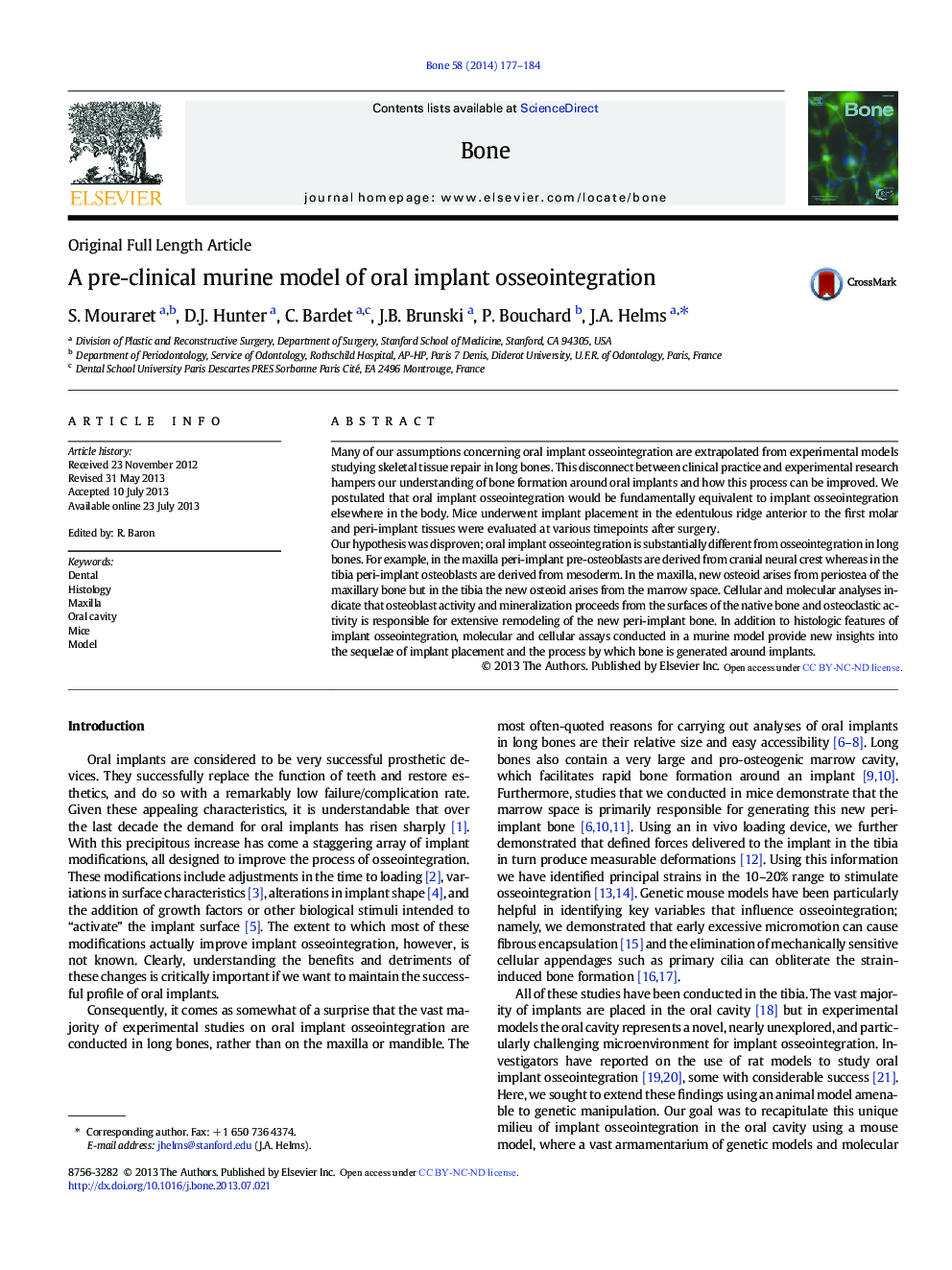| کد مقاله | کد نشریه | سال انتشار | مقاله انگلیسی | نسخه تمام متن |
|---|---|---|---|---|
| 5890486 | 1568161 | 2014 | 8 صفحه PDF | دانلود رایگان |
- Using a murine model, we demonstrate the unique molecular and cellular events mediating oral implant osseointegration.
- In the oral cavity, cranial neural crest derived cells are responsible for implant osseointegration.
- Implant osseointegration occurs rapidly but in other respects recapitulates the same process in large animals and humans.
- Simultaneous bone reabsorption and bone formation are responsible for peri-implant tissue remodeling and osseointegration.
- Creating a murine model of oral osseointegration sets the stage for improving oral implant outcomes in humans.
Many of our assumptions concerning oral implant osseointegration are extrapolated from experimental models studying skeletal tissue repair in long bones. This disconnect between clinical practice and experimental research hampers our understanding of bone formation around oral implants and how this process can be improved. We postulated that oral implant osseointegration would be fundamentally equivalent to implant osseointegration elsewhere in the body. Mice underwent implant placement in the edentulous ridge anterior to the first molar and peri-implant tissues were evaluated at various timepoints after surgery.Our hypothesis was disproven; oral implant osseointegration is substantially different from osseointegration in long bones. For example, in the maxilla peri-implant pre-osteoblasts are derived from cranial neural crest whereas in the tibia peri-implant osteoblasts are derived from mesoderm. In the maxilla, new osteoid arises from periostea of the maxillary bone but in the tibia the new osteoid arises from the marrow space. Cellular and molecular analyses indicate that osteoblast activity and mineralization proceeds from the surfaces of the native bone and osteoclastic activity is responsible for extensive remodeling of the new peri-implant bone. In addition to histologic features of implant osseointegration, molecular and cellular assays conducted in a murine model provide new insights into the sequelae of implant placement and the process by which bone is generated around implants.
Journal: Bone - Volume 58, January 2014, Pages 177-184
